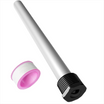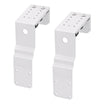Autumn Maintenance Tips: Keeping Your RV Tankless Water Heater in Top Shape

Maintaining your RV tankless water heater is crucial to ensure its optimal performance, especially during the autumn season when temperatures start to drop. Regular maintenance not only helps extend the lifespan of your tankless water heater but also ensures consistent hot water supply for your recreational vehicle (RV). We will provide you with valuable tips to maintain your RV tankless water heater effectively and reap the benefits of a smooth and uninterrupted hot water experience throughout your autumn travels.
Clean the Unit's Exterior and Surroundings
- Remove Dirt and Debris
- Maintain Proper Airflow

Inspect the Water Connections
- Check for Leaks and Damage
- Unclog the Inlet Screen
Test the Temperature and Pressure
- Verify Optimal Water Temperature
- Test Water Pressure

Flush the Water Heater System
- Remove Sediment and Mineral Buildup
- Check the Water Filter
Protect from Excessive Heat
- Shield the Unit from Direct Sunlight
Embrace these maintenance practices and enjoy a comfortable, worry-free hot water experience during your autumn adventures.
Remember that proper maintenance practices can vary based on your specific RV tankless water heater model. Always refer to the manufacturer's instructions and guidelines for the most accurate and tailored maintenance information.
Frequently Asked Questions
Q: Why is autumn maintenance important for my RV tankless water heater?A: Autumn maintenance is crucial to ensure optimal performance and longevity of your RV tankless water heater. It helps prevent issues like reduced efficiency, leaks, and damage, allowing for a consistent supply of hot water during your travels.
Q: How often should I clean the exterior of my RV tankless water heater?
A: It is recommended to clean the exterior of your RV tankless water heater regularly. This helps remove dirt, grime, and debris that can hinder the unit's efficiency. Aim for a cleaning routine at least once every season.
Q: Can I use any descaling solution for flushing my tankless water heater?
A: It is advisable to use a descaling solution recommended by the manufacturer of your RV tankless water heater. These solutions are specifically formulated to effectively remove sediment and mineral buildup without causing damage to the unit.
Q: What water pressure should I aim for in my RV tankless water heater?
A: The optimal water pressure for RV tankless water heaters can vary depending on the manufacturer's specifications. It's best to refer to the user manual or consult the manufacturer for the recommended water pressure range for your specific model.
Q: How do I protect my RV tankless water heater from excessive heat during autumn?
A: To protect your RV tankless water heater from excessive heat during autumn, utilize shade or an awning to shield it from direct sunlight. Additionally, consider applying reflective material to the heater's surface to minimize heat absorption.
Conclusion
In conclusion, maintaining your RV tankless waterheater during autumn is crucial for optimal performance and longevity. Regular cleaning, inspection of water connections, testing temperature and pressure, flushing the system, and protecting the unit from excessive heat are essential. Fogatti, a leading provider of RV tankless water heaters, encourages you to follow these tips to ensure a consistent supply of hot water during your autumn travels. Prioritizing maintenance safeguards against issues, extends the heater's lifespan, and allows for worry-free adventures in your RV or camper. Trust Fogatti's expertise and enjoy reliable hot water throughout your journeys.



























